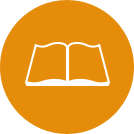
MLA (Modern Language Association) Citation Format
MLA (Modern Language Association) Citation Format
MLA 8 has made some significant changes from the previous version. Below is a helpful guide for MLA 8 Citation. If you need help with citation or have questions please ask a librarian - at the front desk, via email, or using the library’s handy chat services.
MLA 7 vs MLA 8 The Big Difference: In MLA 7 there was a different citation format depending on the type of source being used, ex. book, website, article, tweet, video, etc. For MLA 8 this has been simplified for all sources. Now, instead of needing different information depending on the source, you need the same information for every source. Note: you do not have to include all 9 elements for each source. Use as many of them as you can find for each source.
These “Universal elements” are:
- Author - Last Name, Middle Initial, First Name
- Title of Source - This needs to be italicized.
- Title of Container - this means the name of the website, title of the journal, etc.
- Other Contributors - Editors
- Version - ex. What edition of the book is this? What is the volume number of the journal?
- Number - what is the issue number of the journal?
- Publisher
- Publication Date
- Location - URL
So, for an example, let’s say that you want to cite the book Console Wars. Because it is a book, you will be using the following elements from the list: Author, Title, Publisher, Publication Date, and Publication Location.
The cover of the book shows the title (Console Wars) and the author (Blake J. Harris). Just inside the book, you'll find the publication date (2014), publisher (HarperCollins), and publication location (New York, NY).
Using these details you can create the citation:
Author. Title of Source. Publisher Name, Date.
Harris, Blake. Console Wars. HarperCollins, 2014.
The chart below provides more examples of the more common citation types you will be asked to use.
|
Type of Source |
Format for References |
|
Book - 1 Author |
See the example above |
|
Book - 2 Authors |
* Authors should be listed NOT ALPHABETICALLY but in the order in which they are listed. Author 1 Last Name, Author 1 First Name, Author 2 Last Name, Author 2 First Name. Title of Book. Publisher, Date. Ex. Gaiman, Neil, Pratchett, Terry. Good Omens. William Morrow, 2006. |
|
Book - 3 Authors or More |
* For books AND ARTICLES, if there are 3 authors or more, list the last and first name of the first author listed and then write et al. instead of the names of the other authors Robbins, Chandler. et al. Birds of North America: A Guide to Field Identification. Golden, 1966. |
|
Book - With an Editor |
Author First Name, Last Name. Title of the Book. Edited by Editor's First and Last Name. Publisher, year. The Grimm Brothers. The Classic Fairy Tales. Edited by Maria Tatar. W.W. Norton & Company, 2017. |
|
An Essay in a Large Book Collection |
Author’s last name, First Name. Hughes, Leigh. “Gender- Considerate Digital Game Design.” In Women and Video Game Modding: Essays on Gender and the Digital Community, Edited by Bridget Whelan, McFarland, 2020 |
|
Article in a Database |
Author Last Name, Author First Name, “Title of Article.” Journal Title, vol. #, no. #, year, pp. X-xx. Database Name, URL. Hannah, Daniel K. "The Private Life, the Public Stage: Henry James in Recent Fiction." Journal of Modern Literature, vol.30, no. 3, 2007, pp. 70-94. JSTOR, www.jstor.org.ezproxy.lib.uwf.edu/stable/30053134. Note: When including a URL, omit the http:// and https:// |
|
Article in a Print Journal |
Author Last Name, Author First Name. “Title of the Article.” Title of Journal, vol. #, no. #, year, page # x-xx. Hannah, Daniel K. "The Private Life, the Public Stage: Henry James in Recent Fiction." Journal of Modern Literature, vol.30, no.3, 2007, pp. 70-94. |
|
Website Article (a particular web page on a website) |
Author Last Name, Author First Name. “Title of the article.” Name of the website, date published, url. Farkas, Meredith. "Tips for Being a Great Blogger (and a Good Person)." Information Wants to Be Free, 19 July 2011, meredith.wolfwater.com/wordpress/2011/07/19/tips-for-being-a-great-blogger-and-good-person/. Note: When including a URL, omit the http:// and https:// |
|
Youtube Video |
“Title of the Video.” Youtube, uploaded by username, upload date, URL. “Dog Turns Roomba Off.” Youtube, uploaded by ilovetobamom, 28 Dec. 2016, www.youtube.com/watch?v=ei5H-wd3BIU. |
|
Podcast |
“Name of the Episode” Name of the Program. Website or place where the podcast is available. Accessed date. “Chapter I: If You Keep Your Mouth Shut, You’ll Be Surprised What You Can Learn.” S-Town from Serial and This American Life. stownpodcast.org/chapter/1. Accessed 16 April 2020. |
|
Tweet |
@TwitterHandle. “Contents of the tweet.” Twitter, date of tweet, time of tweet, URL. @NerdGherl. “I just want to eat lunch.” Twitter, 5 April 2020, 12:36 p.m., twitter.com/NerdGerhl/status/1251197337646620682. |
|
Photo or Image |
Photo Creator Last Name, First Name. “Title of the Digital Image.” Title of the website, publisher (there might not be one), Publication Date, URL. Access Date. |
|
TV Show |
“Name of the Episode.” Name of the Show, season number, episode number, Network, original air date. ← it is easy to google the original air date of an episode if you cannot find it elsewhere. “A Fish Out of Water.” Family Guy, season 3, episode 10, Fox Broadcasting Company, 19 September 2001. |
|
TV Show on a Streaming Service |
“Name of the Episode.” Name of The Show, season number, episode number, Name of the Streaming Service, date you watched the episode. Production Company. URL of media. “Not Your Average Joe.” Tiger King, season 1, episode 1, Netflix Corporation, 16 April 2020. Netflix. www.netflix.com/watch/81130220?trackId=13752289&tctx=0%2C0%2C4aed5c95251e84cf4a62bcb0017b6de4342da846%3A2b2949673a18d6351b054e440eb2d41edf4ee777%2C%2C |
Indenting: After the first line of your citation, all other lines must be indented.
In Text Citation
|
Number of Authors |
Format for in text citation |
|
One |
(Author’s Last Name Page #) Ex. (Bobob 22) |
|
Two |
(Author 1 Last Name and Author 2 Last Name Page #) Ex. (Danger and Cliff 65) |
|
Three or more |
(Author 1 Last Name et al. Page #) Ex. Anders et al. 190) |
Direct Quotes VS Paraphrasing
A direct quote is just that, quoting directly from the source, using the author's words with no changes. The quotation should be inside quotation marks -- “ The direct quotation goes inside here.” Add the intext citation at the end of the quotation and include the author's last name and page number as instructed above.
Ex. “The direct quotations goes inside here” (Collins 2).
Paraphrasing is when you take information from a source and then rewrite it in your own words. Even though you are not quoting the information, you still need to provide proper attribution using citation.
Ex. This is a sentence that I have paraphrased (Collins 89).
No Page Numbers and/or No Author
Some sources, like web pages, do not have page numbers, so instead, cite only the last name of the author. If there is no author, cite the first word or words of the title.
Ex. Your article name “Manatees, how do they float?” and there is no listed author, so your in text source would look like this. (“Manatees'')
If the article was called “Sloths, Laziest Animal?” by Gorden Jefferson, your in text citation would look like this (Jefferson).
